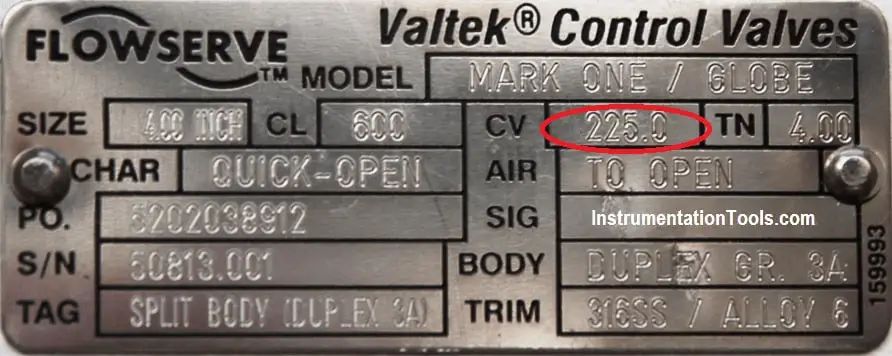Measurement of the control valve flow coefficient(Cv) is very important for knowing the performance of the control valve. The manufacturer determines the control valve flow coefficient(Cv) after manufacturing the control valve and engraves Cv data in the nameplate. We can find the control valve flow coefficient data on the nameplate of the valve. In this topic, we will discuss the importance of measurement of the flow coefficient of the control valve.
Before writing the Cv data in the nameplate, the manufacturer tests the valve for the flow coefficient. The water of specific gravity 1.0 at 60 60 degrees Fahrenheit is suitable for the Cv determining test. After testing for its Cv, the data is mentioned on the nameplate.

Why Measure Control Valve flow coefficient (Cv)?
The followings are the reasons for the measurement of Cv.
- It is easy to compare the different valve flow capacities by measuring the control valve flow coefficient.
- It assists in the selection of the right size control valve for a particular application.
- We can easily understand the valve characteristics by calculating the control valve flow coefficient Cv. Therefore, It is easy to determine the effect of the valve on the pressure in the system.
Practical Use of Flow Coefficient(Cv)
The flow coefficient is very important for the sizing of the valve. The size of the valve decides the flow that can pass through its opening. If the opening is too small, it would cause a pressure drop that can cause liquid to drop below its vapor pressure. This further leads to implosions that cause wear in the valve trims. This phenomenon is called Cavitation.
In this condition, the control valve flow coefficient (Cv) deviates from the flow calculated using the flow coefficient equation for sizing control valves. The reason behind this is the vapor bubbles occupy more volume because the mass of liquid expands during the phase change. and it creates extra resistance to flow.
All these reasons assist in the measurement of the Control Valve flow coefficient (Cv).